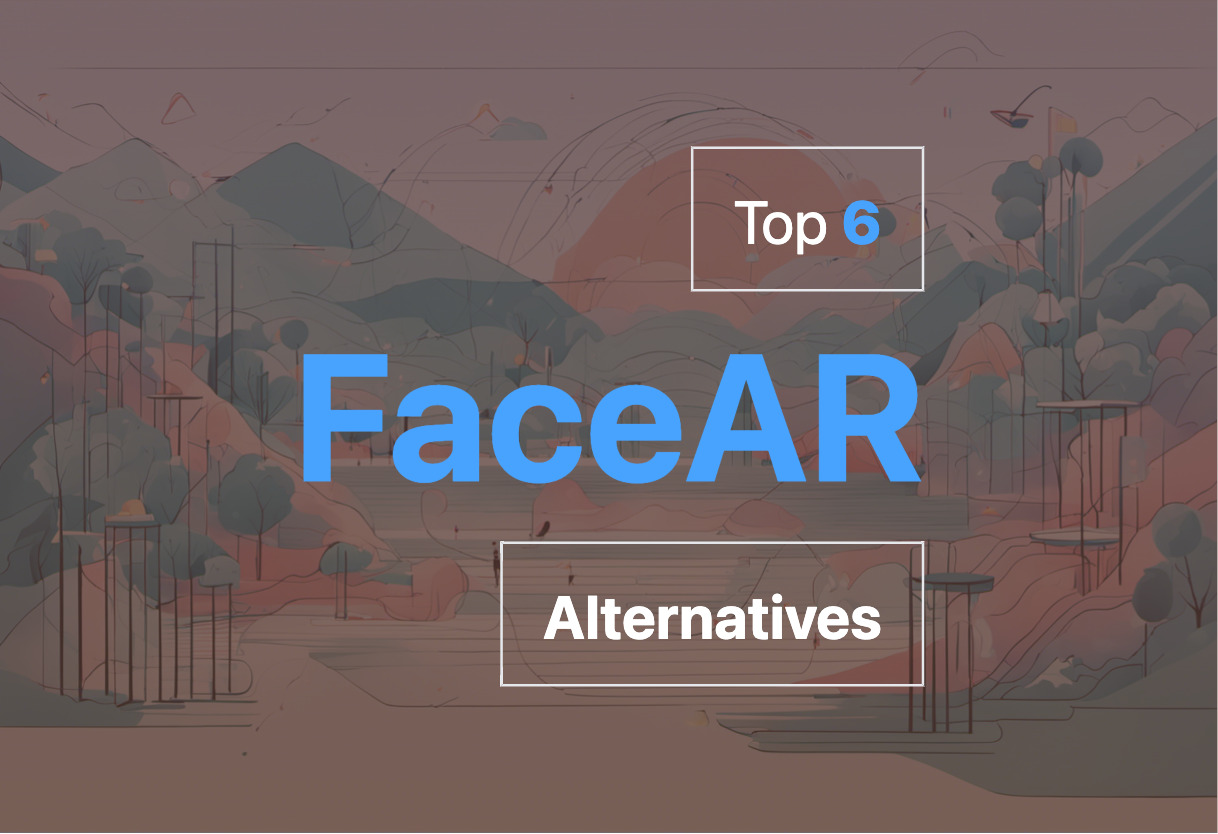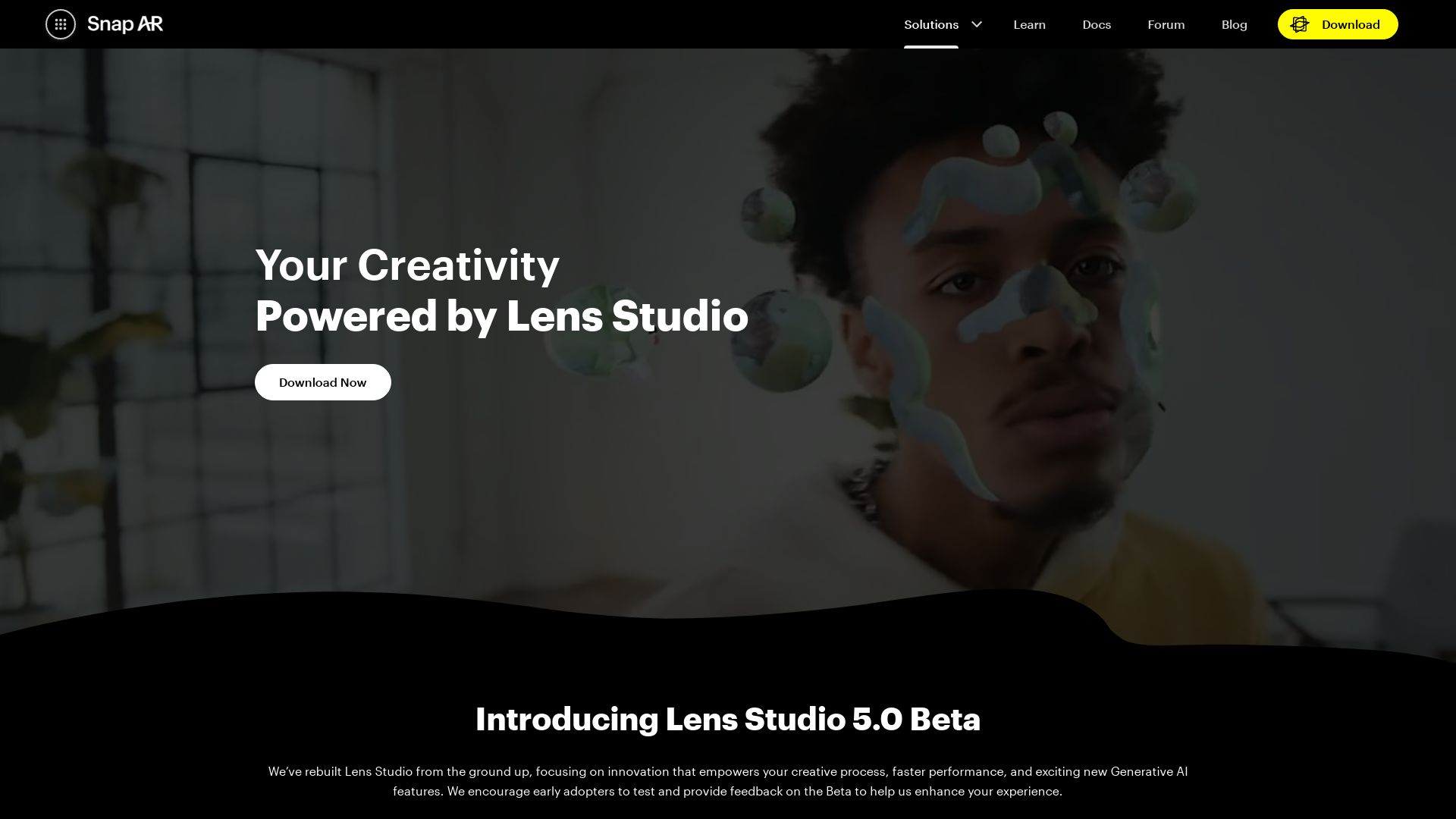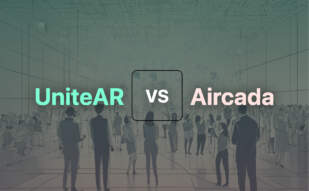
Aircada

In the fast-paced sphere of Augmented Reality, Aircada is a montgolfier not bound by coding chains. Established by Sean and Wylie Chenoweth, this pioneer in creating, deploying, and viewing AR content has struck a chord with artists, designers, and businesses alike, big and small. Asserting their prowess by deploying Spatial AI and embracing device versatility, they’ve grown from a startup to a formidable facet of the AR software market in an astoundingly brief time.
Aircada Top Features
- No-code system: democratizes AR creation to versatile users
- AR web applications: delivers digital augmentations with finesse
- Quicksilver AR experience creation: from inception to deployment in mere seconds
- High-definition 3D rendering capabilities: make graphic illusions come to life
- Embedded AR content management system: ensures streamlined operations
- Superior security: advocates encrypted communication
- Collaboration Allowance: stimulates synergic work environment
- Seamless integration: capable of merging with diverse software platforms
| Support for multiple languages | Caters to a global userbase |
| WebGPU utilization | Ensures fast and efficient performance |
| Aggressively updates features | Keeps the software up to date |
Aircada Limitations
- Can militate newcomer’s experience due to its no-code nature
- Requires cutting-edge devices to utilize all features
Aircada Pricing
Aircada stirs the pot with its tastefully curated pricing model. It offers an enticing FREE edition, loaded with a suite of features and privileges. The subsequent plans unfurl like frugally-priced petals, starting from $20 per month escalating to an all-encompassing enterprise plan at around $79 per month.
Aircada Use Cases
Educational Sector
In the academic sphere, swift and high-quality 3D rendering can facilitate the creation of dynamic and interactive learning materials. This elevates engagement and enhances understanding. Modeling scans for scientific experiments? A resounding yes!
Architectural Designs
Architects can scan, upload, and render their 3D models in a AR-enablement in a click. It empowers them to showcase vibrant, realistic models to their clients and stakeholders.
Fashion & Retail
The fashion & retail industry can use this tech-maverick to provide a immersive AR shopping experience. Also, by using Aircada’s collaboration feature, remote teams can work together, creating engaging content for marketing campaigns.
Spark AR
Step into the realm of Spark AR, an influential open-source Augmented Reality (AR) platform, distinctive for launching impactful brand initiatives on social platforms. Seamlessly connecting developers and AR enthusiasts, Spark AR fortifies immersive experiences that amplify product reach, influence, and interaction. Experience an ease in constructing AR effects, enhancing user-product engagement and access to the comprehensive Spark AR Library.
Spark AR Top Features
- Swift creation of AR filters, bridging the user-product engagement gap.
- Rich asset support via Spark AR Library and an effective partnership with Sketchfab for high-fidelity models.
- Efficient distribution of effects and product branding on major social media platforms.
- Easy-to-use ecosystem facilitating AR experiences with minimal scripting knowledge.
- Integrated components- Spark AR Studio for AR creation, Spark AR Hub for publishing and monitoring, and Spark AR Player for previewing and tracking movements.
- Accessible tutorials, guides and a supportive community fostering creative outputs.
- Facial and movement tracking tools for augmented realism.
| AR Tool | Feature |
|---|---|
| Spark AR Studio | Supports creation of stickers, expressive face filters, and more. |
| Spark AR Hub | Enables publishing effects, monitoring progress, and interaction rates. |
| Spark AR Player | Allows previewing AR creations, movement tracking and managing drafts. |
Spark AR Limitations
- High computation power requirements.
- Primarily compatible only with Instagram and Facebook platforms.
- Must adhere to strict community guidelines for AR effect creation.
Spark AR Pricing
Empowering creators and brands alike, Spark AR Studio is open-source and completely free to download and use. To help you measure product performance, robust analytics are available. Bear in mind, the seamless experience of Spark AR is just an uncomplicated Facebook login away.
Spark AR Use Cases
Use case 1 – Brand Awareness
Spark AR’s immersive AR experiences ensure robust brand recognition and product promotion on social platforms.
Use case 2 – Enhancing User Experience
Spark AR bridges the gap between users and products, offering novel engagement opportunities and superior user experiences.
Use case 3 – For Developers and AR Enthusiasts
With Spark AR Studio, developers and AR enthusiasts can explore the dimensions of AR, creating unique experiences with minimum scripting proficiency.
Lens Studio

Engineered by the forward-thinking minds behind Snap Inc., Lens Studio rises as a popular and innovative AR creation tool, catering to artists and developers. Everyday, millions of users engage the platform, exploring the realm of the augmented reality with ease and curiosity.
Lens Studio Top Features
- Advanced tracking technology and custom shaders, which amplify the user experience.
- A visual programming tool and Material Editor for graphic customization and shader creation.
- SnapML utilised for machine learning augmentation.
- Enhanced interactivity with Script Graph Editor and Behavior helper scripts.
- Effortless 2D/3D software design importing directly into Lens Studio.
| Feature | Benefit |
| Cross-platform distribution on iOS, Android | Accessible from any device |
| Object hierarchy and search features via Objects Panel | Efficient navigation and editing process |
| Integration with Giphy for animated GIF stickers | Adds engaging and fun elements to creations |
Lens Studio Downsides
Please note, at this time no specific disadvantages of Lens Studio are reported in detail.
Lens Studio Use Cases
Use case 1: Daily AR Interaction
With over 75% of its users engaging with AR on a daily basis, Lens Studio serves as a stronghold for everyday creative expression and interactive experiences.
Use case 2: Business Promotion
Businesses find value in Lens Studio for launching Lens Ads, which are distributed for worldwide use and facilitate robust business promotion.
Use case 3: Creative Innovation
Lens Studio is an essential tool for AR developers participating in global competitions to build unique Snapcodes, with cash prizes and professional development opportunities up for grabs.
ARCore
Designed by Google, ARCore is a cutting-edge tool designed for building immersive augmented reality experiences. Harnessing a myriad of APIs, ARCore allows mobile devices to accurately interpret and engage with their environment.
ARCore Top Features
- Fully developed motion tracking, enabling a mobile device to track its position as it moves through the real world.
- Rich environmental understanding that offers detailed perception of the real world.
- Exceptional light estimation, affording realistic AR experiences.
- Supports a wide range of Android phones running Android 7.0 (Nougat) and later.
- ARCore Geospatial API, leveraging Google Maps for enriched AR experiences.
| ARCore API | Description |
|---|---|
| Streetscape Geometry API | This API provides a 3D mesh within a 100m radius around the user’s current location. |
| Geospatial Depth API | It uses architectural and terrain data to enhance depth measurements, up to 65m. |
| Scene Semantics API | Implementation of AI to label every pixel in an outdoor scene for an increased AR experience. |
ARCore Limitations
- Initial availability restrictions, only available to devices such as Pixel and Samsung’s S8.
- Google Maps live view compatibility may have issues.
- Possible problems with unauthorized installation of Google Apps.
ARCore Use Cases
App Development
ARCore delivers excellent capabilities for developing new AR experiences or leveling up existing apps, making it a fantastic tool for app developers.
Urban Exploration
With the introduction of the ARCore Geospatial API that uses Google Maps, users can explore cities in a unique and interactive manner.
Game Design
The open-source demo ‘Mega Golf’ highlights how, with ARCore, game developers can take their digital content to new levels of reality and immersion.
ARKit
Immerse yourself into the digital world with ARKit, an-in house offering by Apple, known for its innovative capabilities since its inception in 2017. Widely compatible with iOS devices, ARKit uses Visual Inertial Odometry technology to map your surroundings with accuracy, offering you an enhanced AR experience.
ARKit Top Features
- 4K video capture, offering high-resolution visual experience suitable for film production, social media, and video editing.
- Improved Motion Capture for seamless human movement representation in AR.
- Simultaneous front and back camera usage to interact with AR content through facial expressions.
- Scene Geometry for realistic space mapping, labeling floors, walls, and objects.
- People Occlusion and advanced object recognition, allowing AR content to pass realistically in front of and behind individuals.
| ARKit Advancements | Significance |
| Expansion of Location Anchors | Populates AR experiences in cities like Montreal, Sydney, Singapore, Tokyo. |
| Supports HDR video and EXIF tags | Offers direct control of camera settings, enhancing the quality of AR experience. |
| ARKit 5 features | Identifies vertical surfaces, image recognition and places objects in geographic spaces. |
ARKit Limitations
- ARKit is largely effective in environments with good lighting and flat surfaces, limiting its usage in diverse settings.
- Its functionality is largely dependent on hardware components, requiring high-functioning sensors for optimal performance.
ARKit Use Cases
Use case 1 – Gaming
With features such as advanced rendering with RealityKit 2 and high-resolution image capture, ARKit enhances interactive gaming experiences, making it a favorite among game developers.
Use case 2 – Retail
ARKit’s potential application in AR navigation using GPS and Bluetooth beacons proves useful in facilitating indoor navigation in large retail stores, distribution centers and shopping malls.
Use case 3 – Industrial
ARKit’s precise object recognition and tracking capabilities find use in various industrial sectors, assisting in spatial planning and layout simulation.
Unity

Having launched in 2005, Unity stands as a powerful engine for 3D and 2D game development, offering compatibility with a variety of operating systems.
Unity Top Features
- Cross-platform game development, including Android and iOS.
- A rich asset store with pre-designed textures and features, facilitating creative game designs.
- Supports a variety of coding languages, including BOO script, Javascript, and C#.
- Active developer community aiding with problem-solving and feedback.
- Continuous tech evolution for improved compatibility and enhanced visual experiences.
| Unity 3D | Enables developers to create 3D simulations and AR applications. |
| Rendering Technology | Ensures high-quality game creation with advanced graphical capabilities. |
| Free Version | Unity provides a free version with substantial features for game development. |
Unity Downsides
- New pricing model applying to installations post January 1, 2024, may be harmful to indie, solo, and mobile developers.
- Per-install fees pose the risk of potential abuse, including repeated downloads by a single user.
- Loss of user trust due to unannounced fee changes and contextual fear of sudden pricing shifts.
- Concerns over how new fees may impact digital preservation efforts.
Unity Pricing
Unity has a unique pricing structure where developers pay a fee each time a game using its software is installed. Unity clarified that fees will only apply to installations and sales after January 1, 2024. Developers will not be charged an install fee until their game reaches $200,000 in revenue and surpasses 200,000 installations.
Unity Use Cases
Use case 1
Unity is ideally suited for developing sophisticated games due to its powerful features and extensive asset store.
Use case 2
The platform is beneficial for developers aiming for cross-platform game releases, due to its proven adaptability with multiple operating systems.
Use case 3
The platform is favored by AR/VR developers for creating immersive experiences, offering a dedicated toolkit and comprehensive software support.
Grant Sullivan
Content writer @ Aircada and self proclaimed board game strategist by day, AI developer by night.





